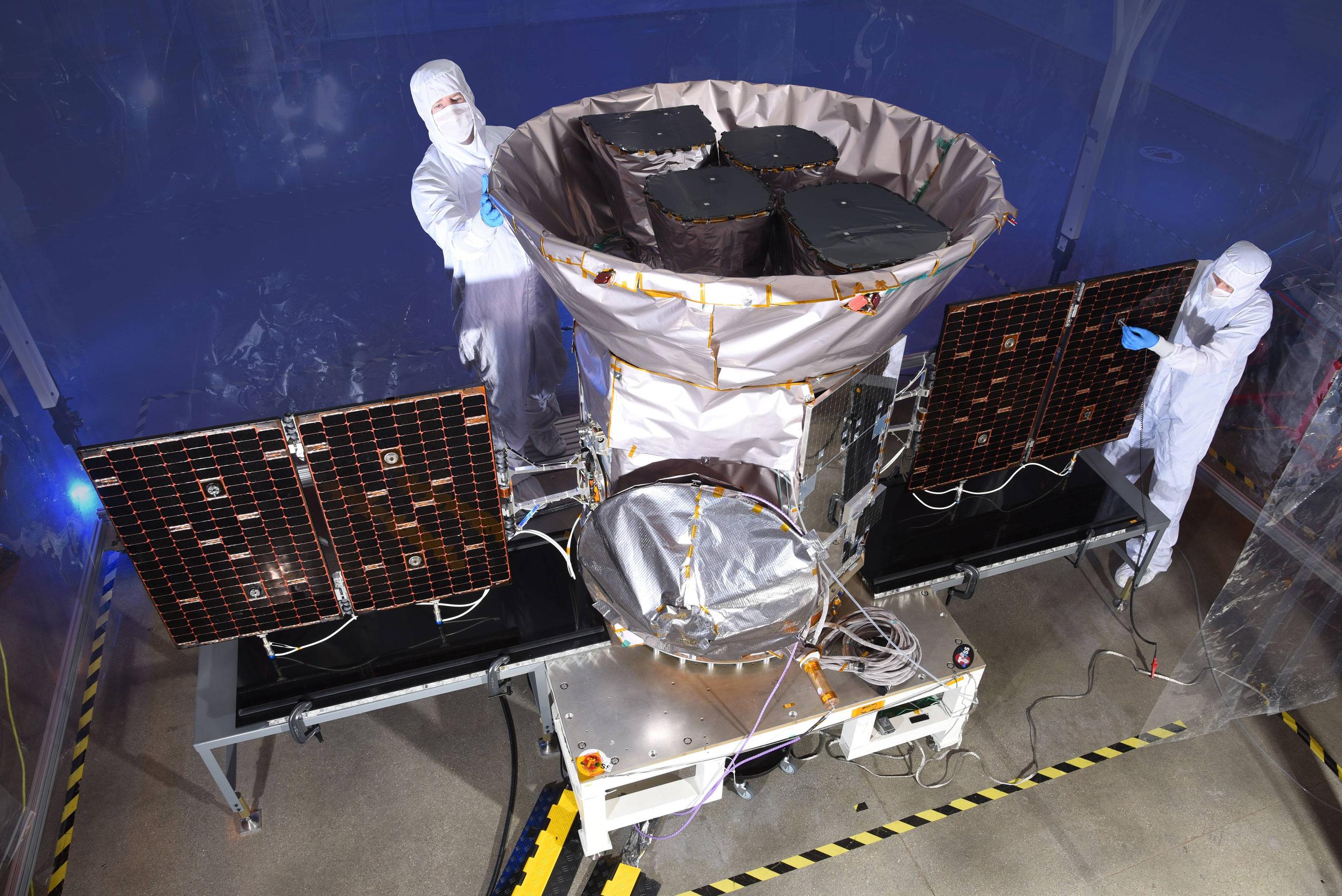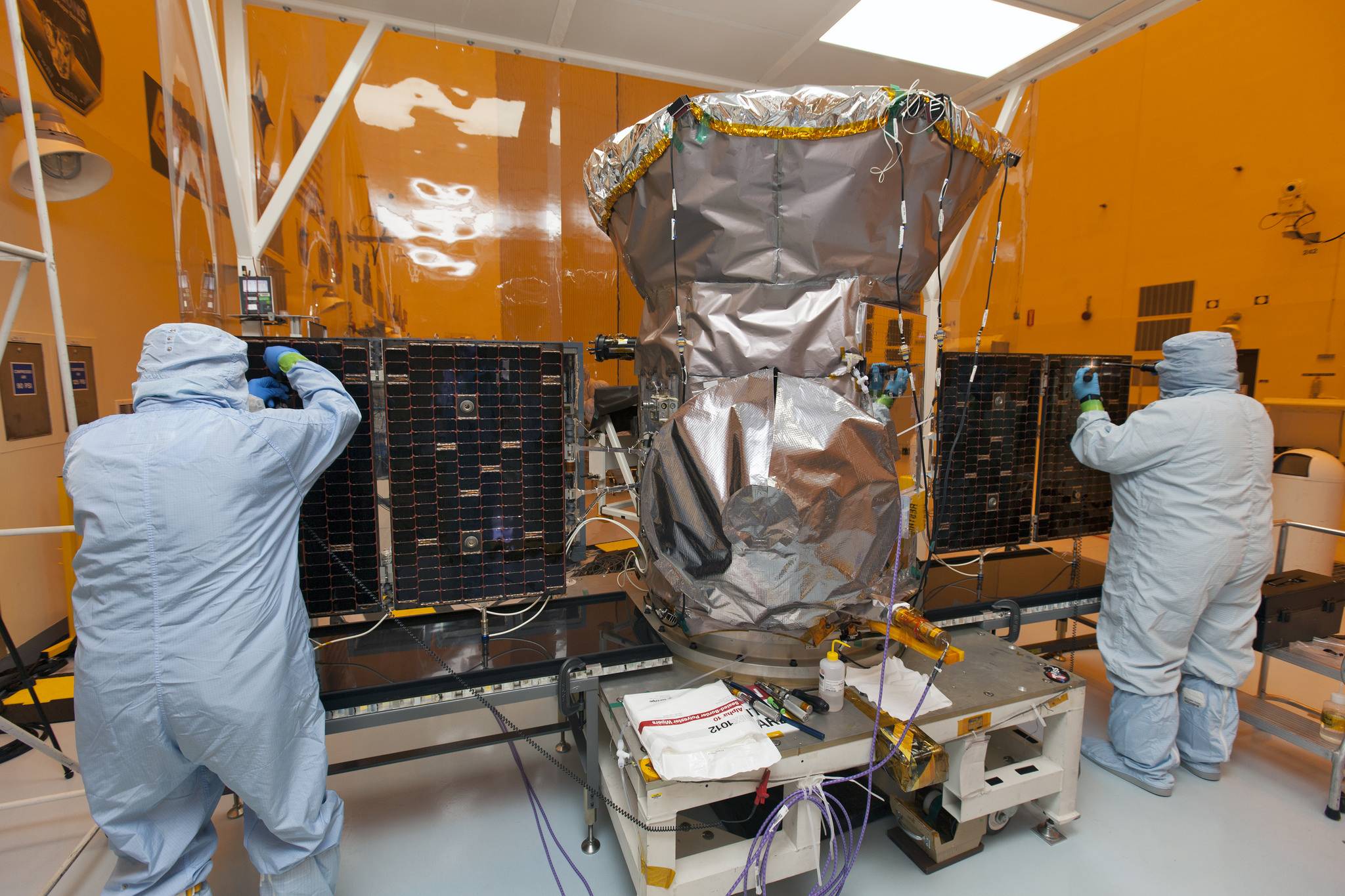The question Why is TESS' high gain antenna made of undulating BLACK fabric rather than metal? has had three bounties, and is probably the recipient of this sites longest answer.
My personal pet theory was that the undulations were a diffractive surface for the RF so that the receiver would be at an RF focus but not an optical focus, since TESS' attitude may unavoidably point the dish toward the Sun. However, now TESS is shown with a presumably RF-transparent cover over the antenna.
You can see lots of detailed photos of the construction of TESS and its individual components in the recent Spaceflight 101 page Photos: TESS Spacecraft Assembly & Testing
Here's a screen shot of a really excellent technical video of the mission Transiting Exoplanet Survey Satellite (TESS).
I just saw the Mashable article TESS is about to become your new favorite NASA mission which links to the new NASA video NASA’s New Planet Hunter: TESS and in this animation there is what looks like a fabric cover over the antenna, which is also shown in the photograph of TESS below, seemingly close to ready for launch.
Question: The appearance of TESS' dish seems to be evolving, what will be the final configuration? Will there be a fabric cover over the antenna once deployed? Will it still have that undulating black fabric on the dish under the white fabric cover? Was the cover over the dish added to the design recently?
below: TESS on Earth. From Mashable. Credit: NASA
below: from Solar Panels Opened on NASA’s TESS Satellite. Photo credit: NASA/Leif Heimbold
below: from Spaceflight Now SpaceX poised to launch planet-hunter. "The Transiting Exoplanet Survey Satellite is prepared for encapsulation inside the Falcon 9 rocket’s nose shroud." Credit: NASA/Kim Shiflett
below: TESS' dish antenna, cropped from Spaceflight 101. Credit: TESS Project: NASA / MIT Lincoln Lab / Orbital ATK





